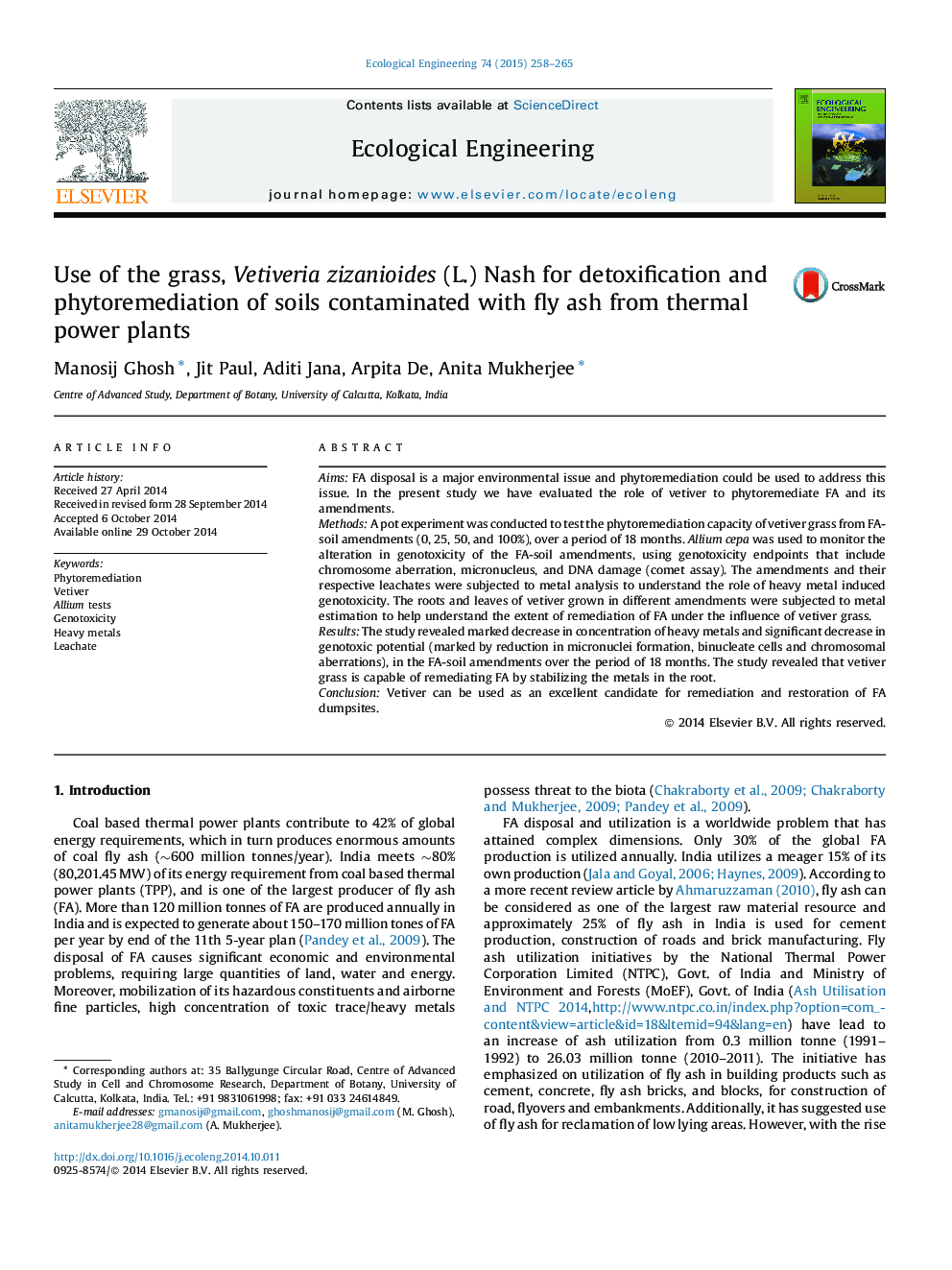| Article ID | Journal | Published Year | Pages | File Type |
|---|---|---|---|---|
| 4389315 | Ecological Engineering | 2015 | 8 Pages |
•Vetiver grass is capable of remediating fly ash.•The root system is primarily responsible to uptake and retains toxic metals from the fly ash.•Vetiver has the potential for phytoremediation and reclamation of fly ash dump sites.•Vetiver phytoremediation reduced fly ash genotoxicity.
AimsFA disposal is a major environmental issue and phytoremediation could be used to address this issue. In the present study we have evaluated the role of vetiver to phytoremediate FA and its amendments.MethodsA pot experiment was conducted to test the phytoremediation capacity of vetiver grass from FA-soil amendments (0, 25, 50, and 100%), over a period of 18 months. Allium cepa was used to monitor the alteration in genotoxicity of the FA-soil amendments, using genotoxicity endpoints that include chromosome aberration, micronucleus, and DNA damage (comet assay). The amendments and their respective leachates were subjected to metal analysis to understand the role of heavy metal induced genotoxicity. The roots and leaves of vetiver grown in different amendments were subjected to metal estimation to help understand the extent of remediation of FA under the influence of vetiver grass.ResultsThe study revealed marked decrease in concentration of heavy metals and significant decrease in genotoxic potential (marked by reduction in micronuclei formation, binucleate cells and chromosomal aberrations), in the FA-soil amendments over the period of 18 months. The study revealed that vetiver grass is capable of remediating FA by stabilizing the metals in the root.ConclusionVetiver can be used as an excellent candidate for remediation and restoration of FA dumpsites.
Graphical abstractFigure optionsDownload full-size imageDownload as PowerPoint slide
